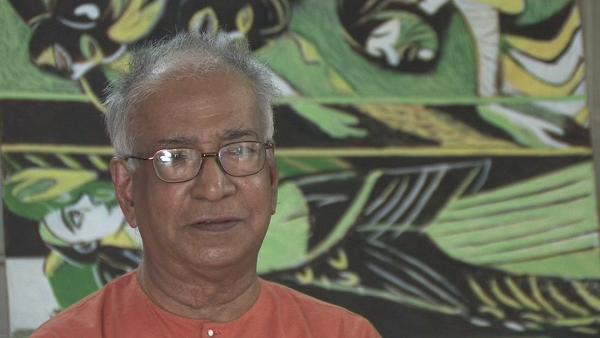NEXT STORY

Murals and rose gardens
RELATED STORIES

NEXT STORY

Murals and rose gardens
RELATED STORIES



One of the more enriching experiences of going to the mediaeval churches was that there was a certain kind of unity of concept in the whole thing, the sculpture, architecture, even the artefacts they used for ritual. There was a certain kind of, a sort of a relationship because afterwards, I mean slowly I think during revolting times they get a little separate, the architecture, sculpture, these things and all, they held their own personality but they are not as related or as unified as you see. And the other thing that struck me was the kind of narrative of sculpture especially, where a narrative goes round the whole sort of a pillar or this sort of a thing, where you know, it coats the whole thing, and then the way they also cloud them with as little detail as possible, showing a certain kind of emotion in the whole thing. All that, I mean there were so many other little details that I saw, and then when I saw them, then I saw also certain relationships I can, or at least parallels I can see in the art of Sanchi or in the kind of ivory carvings of the early times, this kind of thing. So it appealed to me a lot, and then they were very inventive. Probably this whole thing has a kind of roots in the kind of Byzantine type of carving, especially the architectural carving, which I think nobody uses these days anymore because the way they don’t pierce the whole thing, but they cover the whole thing and transform the whole architectural body into something which can speak for itself kind of thing. So, these have sort of affected me in a loose way, and when even now you were to ask me about doing a mural or painting a mural, I have always that at the back of my mind. I mean a mural that transforms a building, a mural that goes around the whole building and wraps it up, that kind of a thing.
KG Subramanyan (1924-2016) was an Indian artist. A graduate of the renowned art college of Kala Bhavana in Santiniketan, Subramanyan was both a theoretician and an art historian whose writings formed the basis for the study of contemporary Indian art. His own work, which broke down the barrier between artist and artisan, was executed in a wide range of media and drew upon myth and tradition for its inspiration.
Title: The influence of the medieval churches
Listeners: Timothy Hyman
Timothy Hyman is a graduate of Slade School of Fine Art, London, in which he has also taught. In 1980 and 1982, he was Visiting Professor in Baroda, India. Timothy Hyman has curated many significant art exhibitions and has published articles and monographs on both European and Indian artists.
Duration: 2 minutes, 44 seconds
Date story recorded: 2008
Date story went live: 10 September 2010